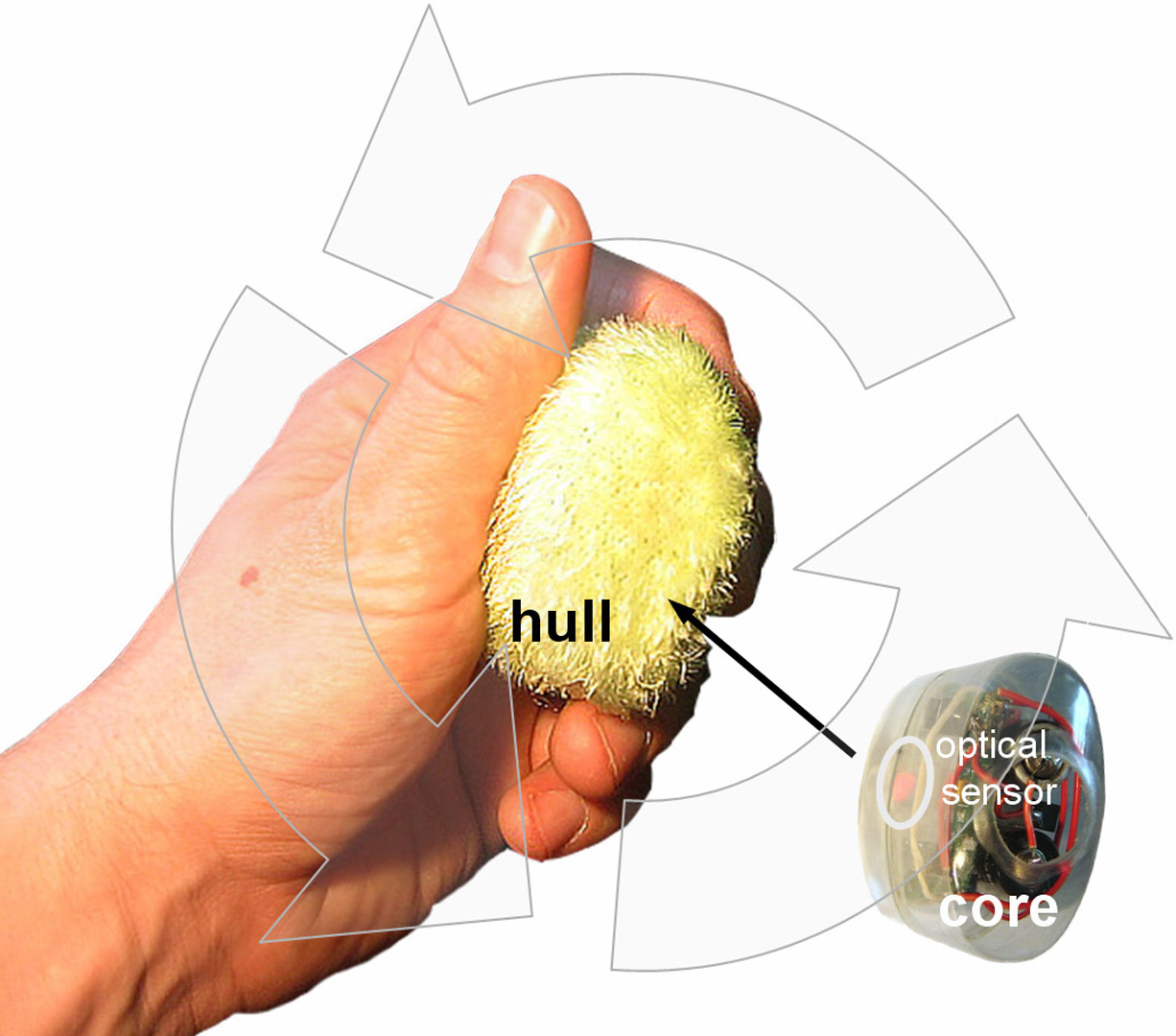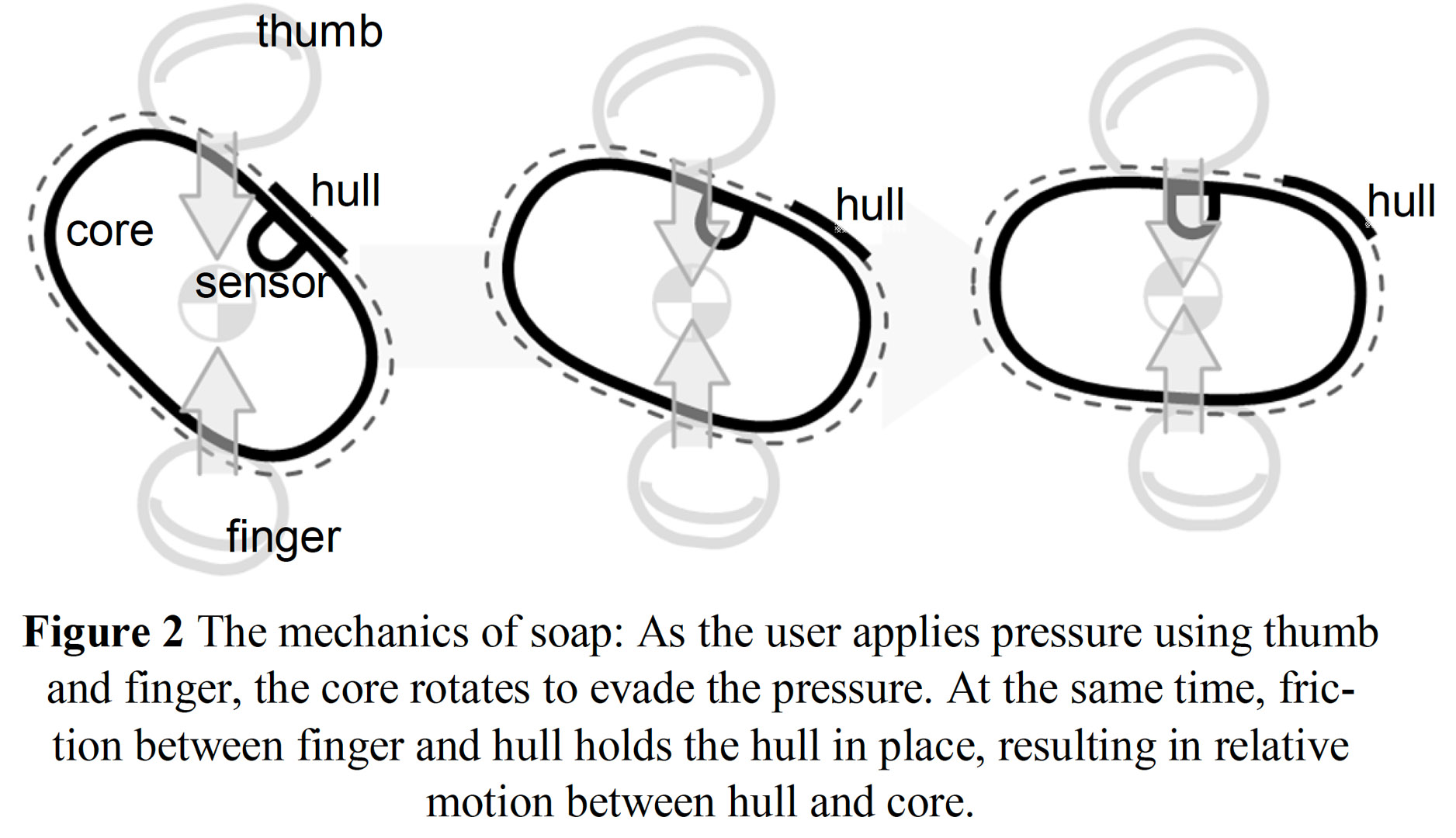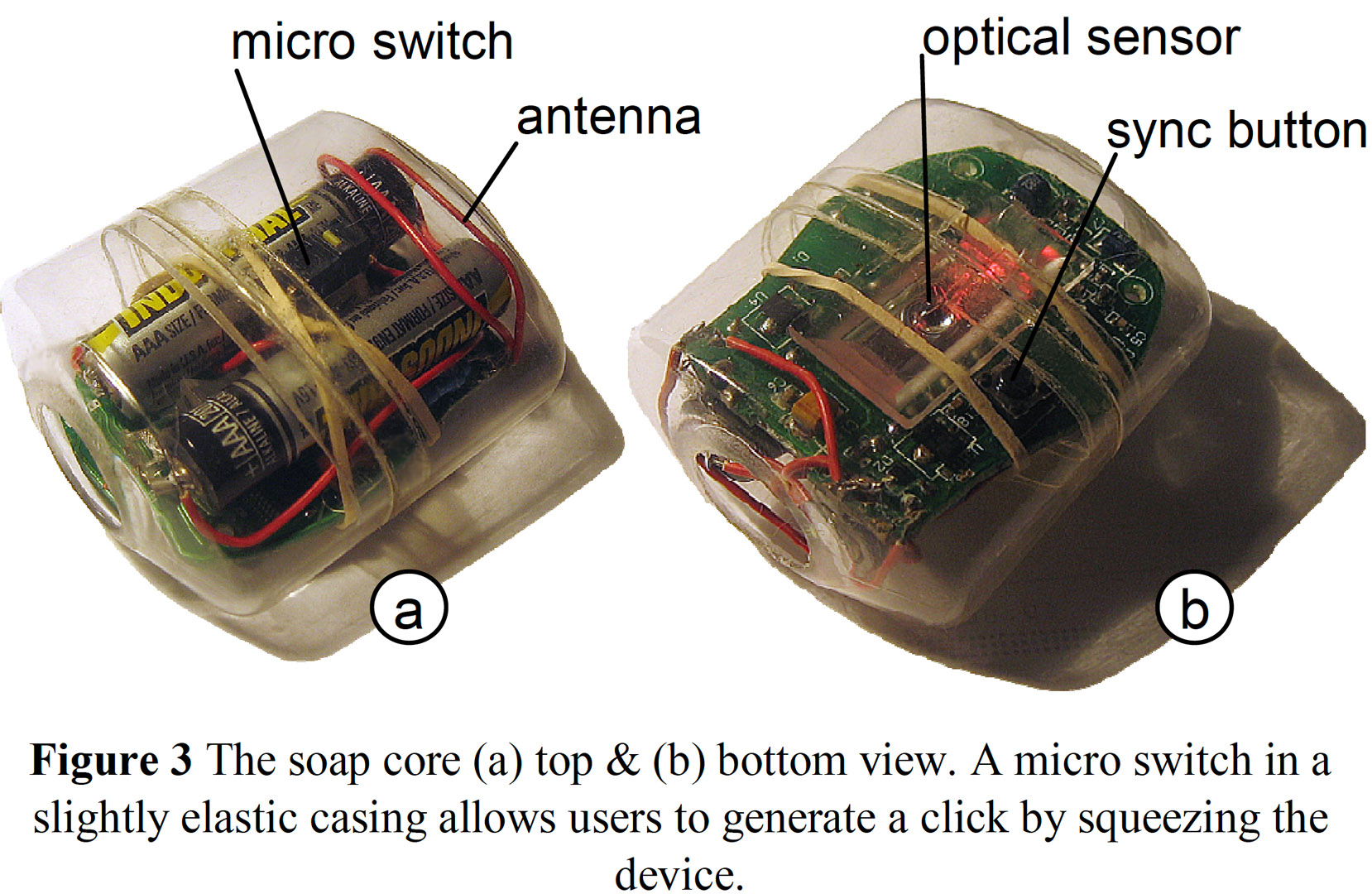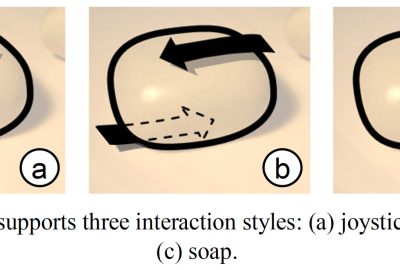“Soap: A Pointing and Gaming Device for the Living Room and Anywhere Else” by Baudisch, Sinclair and Wilson
Conference:
Experience Type(s):
Entry Number: 19
Title:
- Soap: A Pointing and Gaming Device for the Living Room and Anywhere Else
Organizer(s)/Presenter(s):
Description:
Abstract
Soap is a pointing device based on hardware found in a mouse, yet works in mid-air. Soap consists of an optical sensor device moving freely inside a hull made of fabric. As the user applies pressure from the outside, the optical sensor moves independent from the hull. The optical sensor perceives this relative motion and reports it as position input. Soap offers many of the benefits of optical mice, such as high-accuracy sensing. We describe the design of a soap prototype and report our experiences with four application scenarios, including a wall display, Windows Media Center, slide presentation, and interactive video games.
Other Information:
References
BAUDISCH, P., SINCLAIR, M,?AND?WILSON, A. 2006. Soap: a pointing device that works in mid-air. In?Proc. UIST 2006?(tech- note), Oct 15-18, 2006, pp. 43-46.
BUXTON, W. & MYERS, B. 1986. A study in two-handed input. In Proc. CHI ’86, pp. 321-326.
BUXTON, W. 1986. There?s More to Interaction than Meets the Eye: Some Issues in Manual Input. In Norman, D.A. and Draper, S.W. (eds.).?User Centered System Design: New Perspectives on Human-Computer Interaction. Lawrence Erlbaum Associates. Hillsdale, New Jersey. 1986.
CARD, S., MACKINLAY, J.,?AND?ROBERTSON, G. 1991. A morphological analysis of the design space of input devices. In?TOIS 9(2):99?122, April 1991.
HACHET, M., POUDEROUX, J., GUITTON, P. 2005. TangiMap?A Tangible Interface for Visualization of Large Documents on Handheld Computers. In?Proc. GI?05, pp 9-15.
JACOB, R. 1996. Human-Computer Interaction: Input Devices.?ACM Computing Surveys, vol. 28, no. 1, pp. 177-179 (March 1996).
KOHLI, L.?AND?WHITTON, M. 2005. The Haptic Hand: Providing User Interface Feedback with the Non-Dominant Hand in Virtual Environments.?In?Proc. GI 2005, pp. 1-8.
MCLOONE, H. 2001. Touchable Objects. In?Proc. International Conference on Affective Human Factors Design?Asean Academic Press, London, 2001.
PENNY AND?GILES?Endless Belt www.pennyandgiles.com/products/products.asp?intElement=1174
REKIMOTO, J. 1996. Tilting Operations for Small Screen Inter- faces. In?Proc. UIST?96.?pp. 167?168
VLACK, K., MIZOTA, T., KAWAKAMI, N., KAMIYAMA, K., KAJIMOTO, H., TACHI, S. 2005. GelForce: A Traction Field Tactile Interface. In?CHI?05 Extended Abstracts.
WILSON, A.?AND?SHAFER, S. 2003. XWand: UI for Intelligent Spaces, In?Proc. CHI?03, pp. 545-552.
WILSON, A. 2004. TouchLight: An Imaging Touch Screen and Display for Gesture-Based Interaction,?Proc. ICMI?04, pp. 69-76.
ZHANG, Z., WU, Y. SHAN, Y.,?AND?SHAFER, S. 2001. Visual Panel: Virtual Mouse, Keyboard and 3D Controller with an Ordinary Piece of Paper. In?Proc. ACM Workshop on Perceptive User Interfaces 2001.
Additional Images:
- 2007 ETech Baudisch: Soap: A Pointing and Gaming Device for the Living Room and Anywhere Else
- 2007 ETech Baudisch: Soap: A Pointing and Gaming Device for the Living Room and Anywhere Else
- 2007 ETech Baudisch: Soap: A Pointing and Gaming Device for the Living Room and Anywhere Else
- 2007 ETech Baudisch: Soap: A Pointing and Gaming Device for the Living Room and Anywhere Else
Acknowledgements:
Many people have provided suggestions, materials, access to lab time etc. to this project, in particular Steve Bathiche, Kevin Flick, Hugh McLoone, Ken Hinckley, Jim Crawford, Thamer Abanami, Duane Molitor, Shirlene Lim, and John Lutian. Thanks also to Kim Young for the sketch of a soap mobile audio player used in the video.











